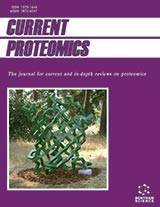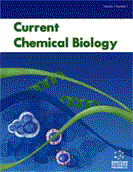Abstract
Background: Francisella tularensis is a stealth pathogen fatal for animals and humans. Ease of its propagation, coupled with high capacity for ailment and death makes it a potential candidate for biological weapon.
Objective: Work related to the pathogen’s classification and factors affecting its prolonged existence in soil is limited to statistical measures. Machine learning other than conventional analysis methods may be applied to better predict epidemiological modeling for this soil-borne pathogen.
Methods: Feature-ranking algorithms namely; relief, correlation and oneR are used for soil attribute ranking. Moreover, classification algorithms; SVM, random forest, naive bayes, logistic regression and MLP are used for classification of the soil attribute dataset for Francisella tularensis positive and negative soils.
Results: Feature-ranking methods concluded that clay, nitrogen, organic matter, soluble salts, zinc, silt and nickel are the most significant attributes while potassium, phosphorous, iron, calcium, copper, chromium and sand are the least contributing risk factors for the persistence of the pathogen. However, clay is the most significant and potassium is the least contributing attribute. Data analysis suggests that feature-ranking using relief produced classification accuracy of 84.35% for multilayer perceptron; 82.99% for linear regression; 80.27% for SVM and random forest; and 78.23% for naive bayes, which is better than other ranking methods. MLP outperforms other classifiers by generating an accuracy of 84.35%, 82.99% and 81.63% for feature-ranking using relief, correlation and oneR algorithms, respectively.
Conclusion: These models can significantly improve accuracy and can minimize the risk of incorrect classification. They further help in controlling epidemics and thereby minimizing the socio-economic impact on the society.
Keywords: Francisella tularensis, feature ranking, pathogen classification, multilayer perceptron, persistence of Francisella tularensis, soil-borne pathogen, risk factors, biological weapon.
Graphical Abstract
Current Bioinformatics
Title:Identification of Most Relevant Features for Classification of Francisella tularensis using Machine Learning
Volume: 15 Issue: 10
Author(s): Fareed Ahmad*, Amjad Farooq, Muhammad Usman Ghani Khan, Muhammad Zubair Shabbir, Masood Rabbani and Irshad Hussain
Affiliation:
- Department of Computer Science and Engineering, Faculty of Electrical Engineering, University of Engineering and Technology, Lahore,Pakistan
Keywords: Francisella tularensis, feature ranking, pathogen classification, multilayer perceptron, persistence of Francisella tularensis, soil-borne pathogen, risk factors, biological weapon.
Abstract:
Background: Francisella tularensis is a stealth pathogen fatal for animals and humans. Ease of its propagation, coupled with high capacity for ailment and death makes it a potential candidate for biological weapon.
Objective: Work related to the pathogen’s classification and factors affecting its prolonged existence in soil is limited to statistical measures. Machine learning other than conventional analysis methods may be applied to better predict epidemiological modeling for this soil-borne pathogen.
Methods: Feature-ranking algorithms namely; relief, correlation and oneR are used for soil attribute ranking. Moreover, classification algorithms; SVM, random forest, naive bayes, logistic regression and MLP are used for classification of the soil attribute dataset for Francisella tularensis positive and negative soils.
Results: Feature-ranking methods concluded that clay, nitrogen, organic matter, soluble salts, zinc, silt and nickel are the most significant attributes while potassium, phosphorous, iron, calcium, copper, chromium and sand are the least contributing risk factors for the persistence of the pathogen. However, clay is the most significant and potassium is the least contributing attribute. Data analysis suggests that feature-ranking using relief produced classification accuracy of 84.35% for multilayer perceptron; 82.99% for linear regression; 80.27% for SVM and random forest; and 78.23% for naive bayes, which is better than other ranking methods. MLP outperforms other classifiers by generating an accuracy of 84.35%, 82.99% and 81.63% for feature-ranking using relief, correlation and oneR algorithms, respectively.
Conclusion: These models can significantly improve accuracy and can minimize the risk of incorrect classification. They further help in controlling epidemics and thereby minimizing the socio-economic impact on the society.
Export Options
About this article
Cite this article as:
Ahmad Fareed *, Farooq Amjad , Ghani Khan Usman Muhammad , Shabbir Zubair Muhammad , Rabbani Masood and Hussain Irshad , Identification of Most Relevant Features for Classification of Francisella tularensis using Machine Learning, Current Bioinformatics 2020; 15 (10) . https://dx.doi.org/10.2174/1574893615666200219113900
| DOI https://dx.doi.org/10.2174/1574893615666200219113900 |
Print ISSN 1574-8936 |
| Publisher Name Bentham Science Publisher |
Online ISSN 2212-392X |
 19
19 1
1
- Author Guidelines
- Bentham Author Support Services (BASS)
- Graphical Abstracts
- Fabricating and Stating False Information
- Research Misconduct
- Post Publication Discussions and Corrections
- Publishing Ethics and Rectitude
- Increase Visibility of Your Article
- Archiving Policies
- Peer Review Workflow
- Order Your Article Before Print
- Promote Your Article
- Manuscript Transfer Facility
- Editorial Policies
- Allegations from Whistleblowers

















.jpeg)








